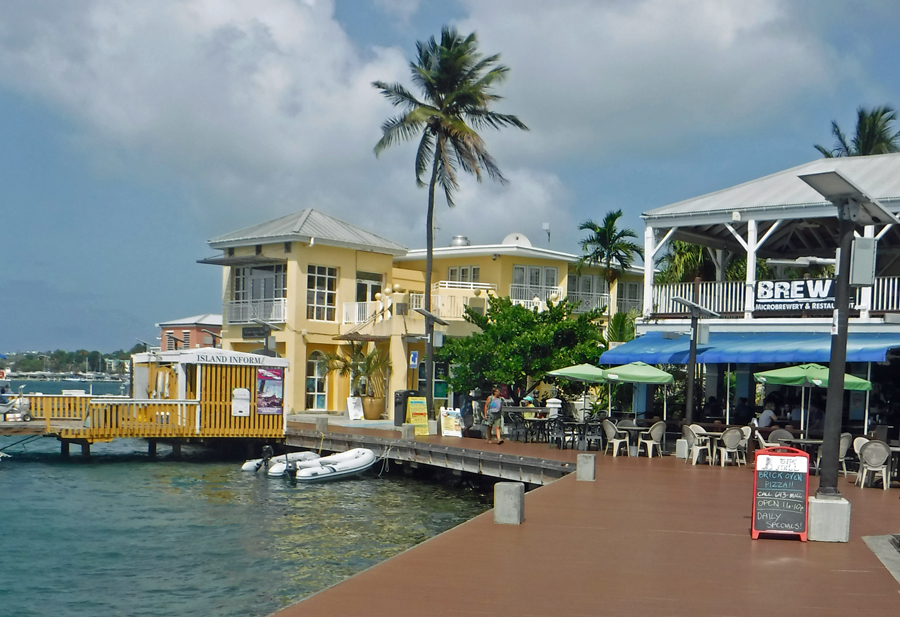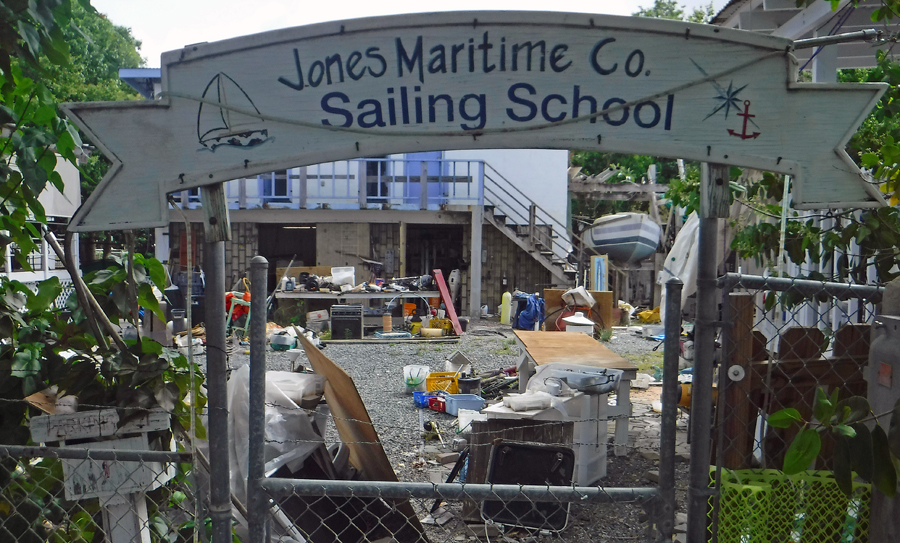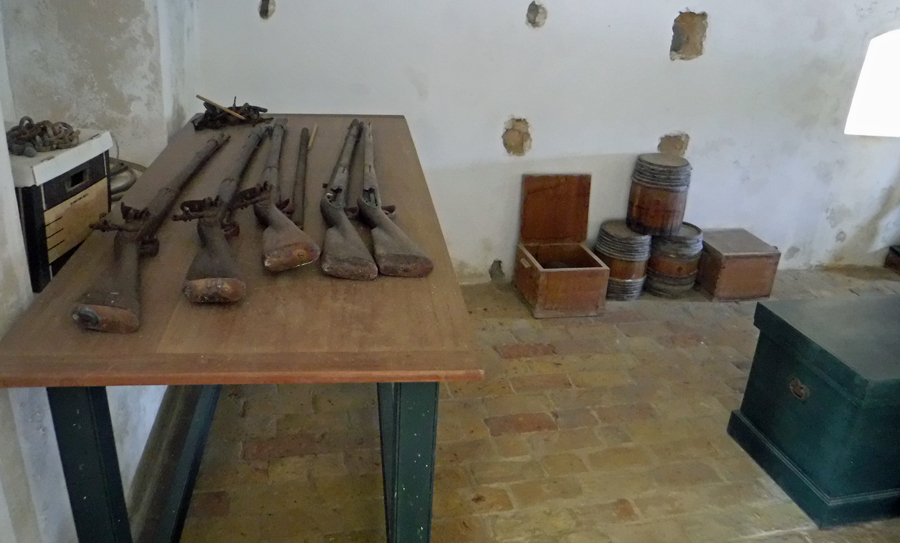Finally, we turned south! After what seemed like years going into the east wind working our way from the west coast of Puerto Rico to the Virgin Islands we managed to get in a full day of sailing. Our last good sail was the 4 day trip from Turks and Cacaos Islands to Puerto Rico some two months ago. This trip from St John to St Croix put us on a southern course with east winds making it ideal for sailing. We couldn’t have asked for a better day, calm seas, fifteen knot winds and sunshine. Perfect!
Our arrival in Christiansted, St Croix wasn’t without a little excitement. Following the channel markers through the reef we made our way into Christiansted Bay. First glimpses revealed the spot I had previously picked out on the chart to set our anchor was packed with boats. There was simply not enough room for us. The area was filled with private mooring buoys and what little space there was between the moorings already had a boat. To make matters a little worse the seabed has a lot of grass. Grass makes for loose sand. Anchors don’t like loose sand. The only open areas were near the main channel or in a small basin away from town.
Opting to drop our anchor in an area near the main channel put us behind a massive catamaran. The anchor bite and after a couple of hours we figured we were good for a few days. So there we were, nice and relaxed, sipping cold drinks and watching the tour boats pass by taking passengers diving and to the nearby Buck Island National Park. Then, I happened to notice a sign on the shore, “Do not anchor between these signs – Cable Area”. Okay, where is the other sign and which way does the cable run? Uh oh! There it is. Although we weren’t directly on the cable, we undeniably drifted over the cable with the amount of anchor chain we let out. Not wanting to deal with a power cable on the anchor or a fine, we moved.
We tried four times to set the anchor in other areas. Our ever faithful anchor just would not hold because of the grassy bottom. Then, it started to rain. And, it was now getting dark. Our chart showed an area of deeper water toward the other end of town and out toward the middle of the bay. This alternative area was big enough to anchor but was surrounded by reefs and shallows. We had just enough daylight left to get there. In the downpour, using GPS, radar and limited vision we crept slowly down the channel barely being able to see the next set of red and green buoys appear through the rain. As quickly as the rain started, it stopped. Yippee! We can see again. We might look like couple of drowned rats but at least we can see where we are going.
Arriving at the new location, we notice one other boat that happened to be from Austin, Texas. Good, there is lots of room for both of us. Or, so we thought. Giving the Texans a lot of swing room we dropped the anchor. As the boat drifted backward in the wind we continued to let out chain until we reached our desired ratio of depth verses chain length. So far, so good. We added our snubber (a snubber is a length of rope fastened to the chain serving as a stretching connection to the boat to avoid hard yanking pulls on the boats cleats with the chain). Next, we put Cream Puff in reverse pulling everything nice and tight. This is the part where the anchor is supposed to dig into the sand and set hard. Instead, we succeeded in dragging the anchor across the seabed for about fifty yards. But, wait a second. The anchor finally bit and dug itself in deeply into the sand. We thought we were done. But wait, there’s more.
As boats tend to do at anchor, Cream Puff decided to go on a little walkabout testing the limits of the leash. Drifting slowly with the current or wind and swinging gradually where the elements decide, our Texan neighbors now appeared too close for comfort. Should the wind change, we might bump them. Our luck would have us doing this at about 4am. Guessing they wouldn’t be too happy about playing bumper boats, we had to move. Again! We dropped the anchor twice more after this before finally finding a spot far enough from other boats and in an area with good holding. In total we dropped our anchor seven times.
Christiansted is charming. I have to admit the hassle of anchoring was completely and utterly diminished by the quaintness of the township. The local architecture of shuttered buildings and narrow streets is characteristic since being a Dutch colony for most of the island’s populated existence. A prominent feature is Fort Christiansværn built in 1738 and still looking good. This is one of the few forts we have visited boasting museum artifacts. The outbuildings such as the armory and officer’s quarters displayed period pieces.
The town features a newly built boardwalk along the waterfront allowing visitors to stroll and take in the harbor views. The boardwalk also makes it easy for us to land our dinghy being able to tie up for no charge in the heart of the shops and restaurants.
























